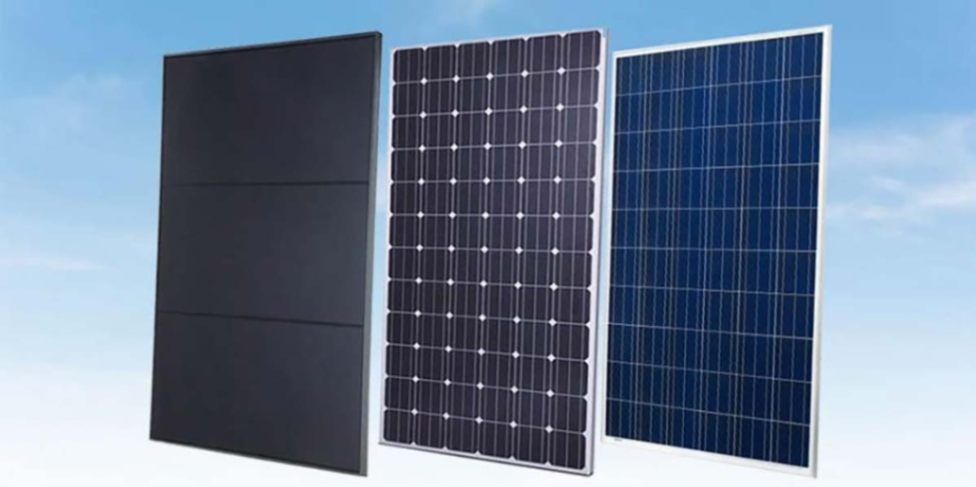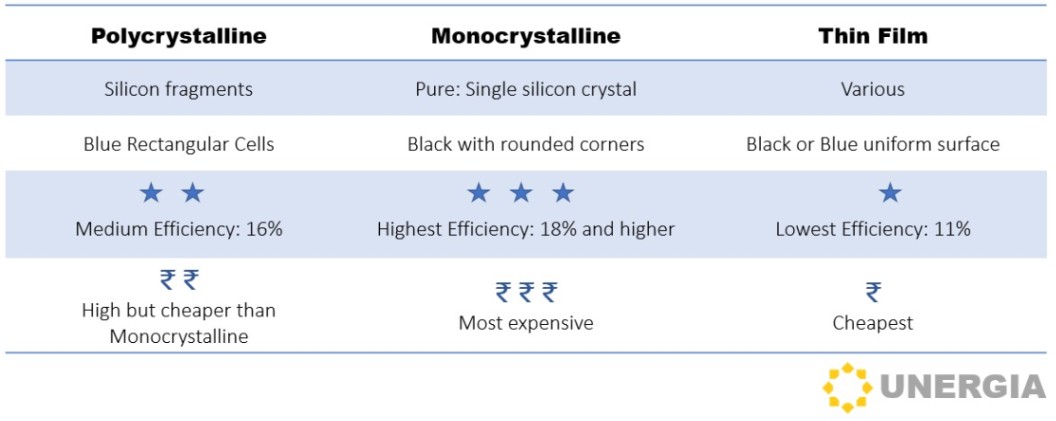The Best Type Of Solar Panel For Your Needs

The cost of solar modules has decreased by 99% over the last four decades. This drastic reduction in prices makes it the best time to switch to solar energy to enjoy its benefits. However, one of the first questions you will encounter when you decide to switch to solar power is about the type of solar panels best suited for your needs. To help you make an informed choice on that, we will list down the various solar panels available in the market as well as the ones fresh in the market or currently under R&D.
Three Major Types of Solar Panels:
Solar Panels can be categorized generally either on the basis of the generation they belong to or if the solar panels are single junction or multi-junction. Classification on generation is based on the type of material used and the efficiency of the panels.
1st Generation Solar Panels:
These solar panels are the traditional types that we come across in conventional settings. They are made up of either mono or polycrystalline Silicon.
Monocrystalline Solar Panel (Mono-SI): As the name suggests, these panels are made by slicing a single silicon crystal into wafers and then arranging the wafers in rows and columns. They can be easily identified by their dark color and rounded edges. The dark color is due to the high purity silicon and since the silicon crystal (called an ingot) is cylindrical in shape, upon slicing, the wafers get rounded edges.
Polycrystalline Solar Panels (Poly-SI): You can quickly identify these by the presence of square-shaped solar cells and the bluish hue. Also called multi-crystalline solar panels, these are manufactured by melting fragments from multiple silicon crystals. The molten crystals are then molded into solid blocks before being cut into rectangular wafers.
2nd Generation Solar Panels:
Thin Film Solar Panels: These are also called the second generation of solar panels. They are produced by putting a layer of non-crystalline silicon on a substrate like glass or metal. They can be made from a variety of materials like:
- Cadmium Telluride
- Amorphous Silicon
- CIGS - Copper Indium Gallium Selenide
The wafers of thin-film solar cells are extremely thin in comparison to the other types. This makes it possible to stick these panels directly to a surface with an adhesive. They can also be placed inside more sturdy and durable glass frames like the previous two types. Thin-Film solar panels have a distinct black or blue uniform surface.
Different Panel Types Compared:

Efficiency: Monocrystalline takes the trophy when it comes to the efficiency of solar panels. Monocrystalline panels have an efficiency of more than 20%. Polycrystalline Panels are second-ranked with efficiency ranging from 15-17%. For thin-film panels, efficiency depends on the specific material used but often revolves around a measly 11%.
Power generation capacity: For the same size, Monocrystalline modules can generate as high as 400 Watts of power per panel which is more than poly-crystalline panels that generate up to 300 watts. Thin-film panels lag behind when it comes to power generation per square foot. Recently, few companies have even launched monocrystalline solar panels that can generate 500 watts of power per panel.
Price: Owing to its high efficiency and power generation capacity, monocrystalline weighs a bit heavy on the price scale. Polycrystalline panels are relatively lower priced because of an easier manufacturing process. Although the price depends on the material used, thin-Film panels are the cheapest type of solar panel available in the market. They are also easily maneuverable which reduces the installation charges.
Which Panel Type Is Best For Your Installation?
The answer depends upon the area available and the goal you wish to achieve by the installation. If you have sufficient area available, then you can go ahead with polycrystalline units to cut on the initial cost since the price of solar panels is proportional to the efficiency. However, if the area available is limited, and you want to reduce your electricity bill, then high-efficiency monocrystalline panels should be your go-to option.
Thin-Film panels are useful where portability is required or on large industrial rooftops that can not afford heavyweight solar modules. They can also be used in boats or ships as they are lightweight.
Since they are inexpensive, they are a good option for saving money provided the area isn’t a constraint.

 Unergia
Unergia